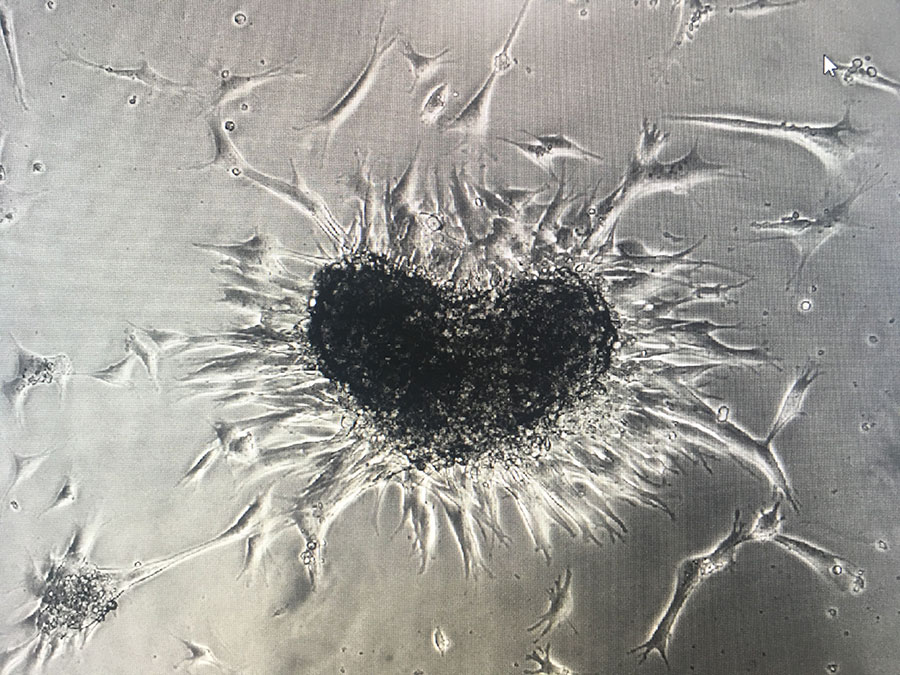IBS Art in Science
Differentiation of Affection
감정의 분화
/
Sejin Park
박세진
/
Center for RNA Research
RNA 연구단
/
New books are published every day, constantly changing the new release section in bookstores. A majority of them are books on human emotions, especially popular are publications on love and relationships for readers desperately seeking some helpful advice. Nonetheless, we will never fully know how affection works between people, how these feelings start, why they change, and where they will end up when everything is said and done. A heart shape cell block in the photograph was captured by chance in the course of a gene expression experiment for neural stem cell differentiation. The experiment itself was actually a failure as the result was not as expected but it left this interesting heart shape image of a cell block with what looks like twigs extending in all directions. It looks similar to the affection we have for someone—that feeling of emotion that keeps changing and spreading out naturally like water flowing. The cell-cell interactions observed through a microscope and the change of human emotions have something in common—both are unpredictable.
서점에 가면 매일같이 쏟아져 나오는 신간도서들을 볼 수 있다. 많은 인문학 서적들 중 압도적으로 높은 비중을 차지하는 건 ‘감정’에 관한 책들이다. 그 중에서도 ‘호감과 애정’을 주제로 다룬 책들은 단연 인기가 높다. 작가들은 어제와 오늘에 이어 내일도 끝없이 ‘사람의 감정’에 대한 더 나은 분석과 새로운 관점을 제시할 것이다. 감정은 어떤 계기로 시작되고, 어떤 방향으로 분화되어, 어디로 종착할까? 사진 속 하트모양 세포 군집은 신경줄기세포에 특정 유전자를 발현시켜 분화를 유도하는 실험을 진행하다가 우연히 관찰된 것이다. 실험 결과가 예상과 달랐기에 실험 자체는 실패했다고 볼 수 있지만, 대신 신기한 경험을 한 셈이다. 관찰된 세포 군집의 모습은 사방으로 뻗어나가는 잔가지를 가진 하트 모양이었다. 이 모습은 마치 물 흐르듯 자연스럽게 변화하며 퍼져나가는 ‘감정’과 비슷해 보인다. 현미경 너머로 관찰한 세포의 상호작용과 우리의 감정의 변화는 예측하기 어렵다는 공통점이 있다.
/
Copyright
Center for RNA Research
